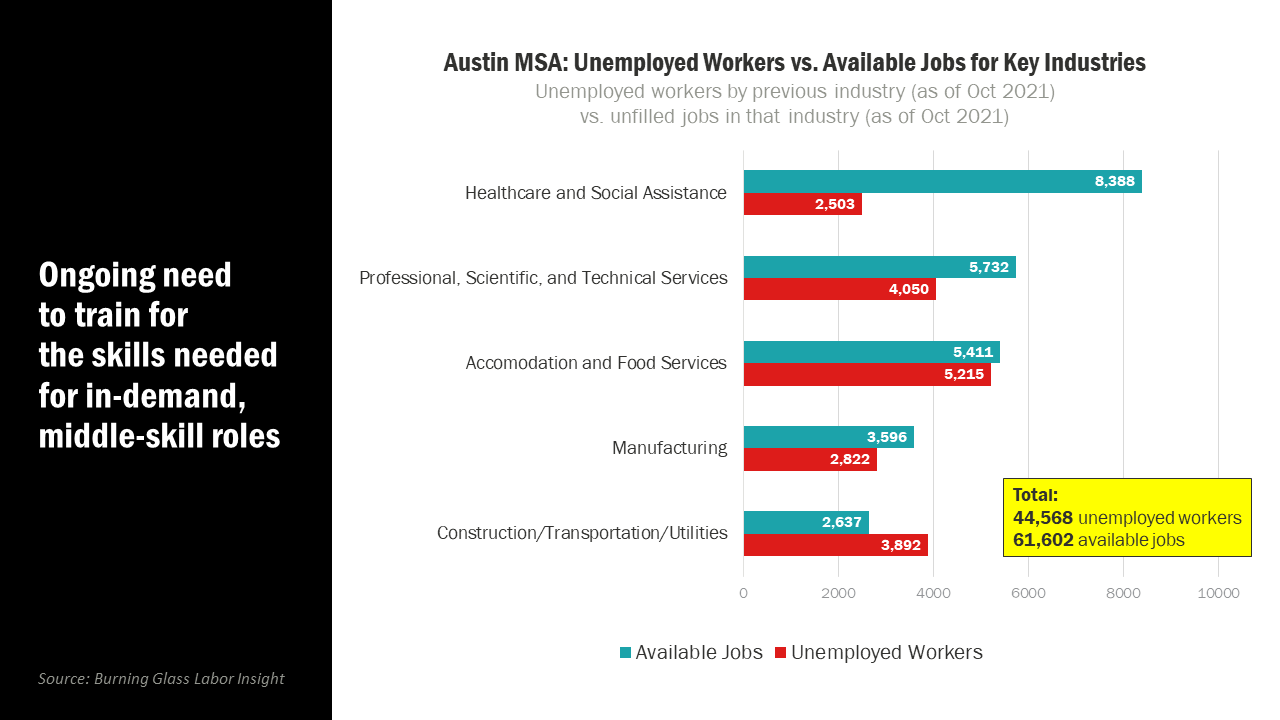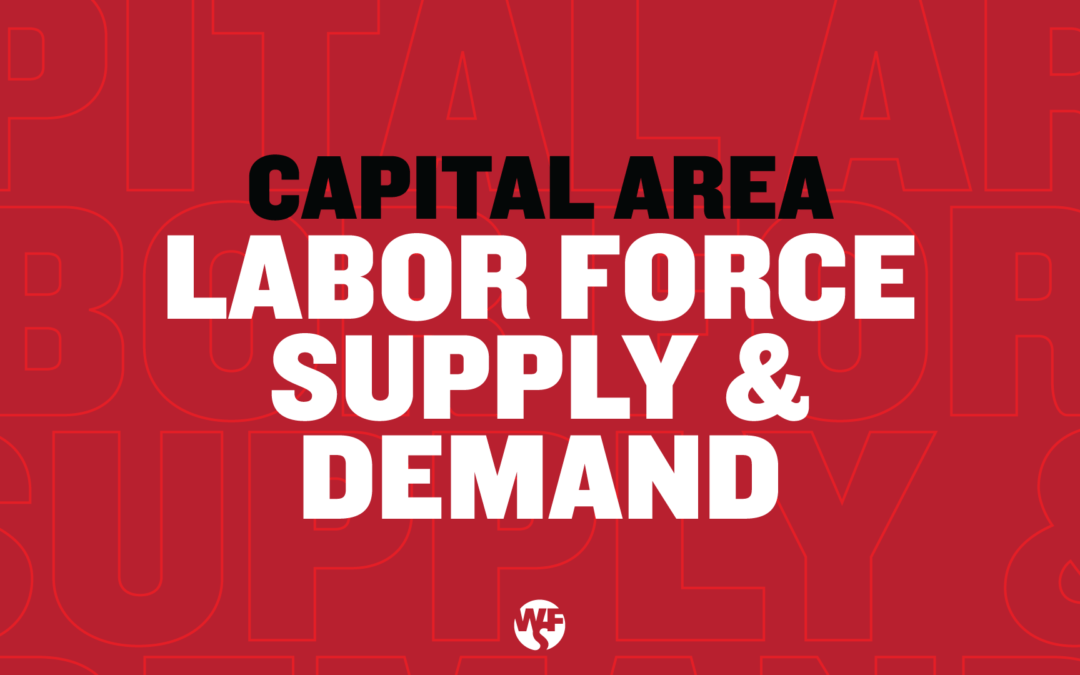Key takeaway: Austin area businesses are hiring, many opportunities are available, and workers in our area earn what they learn. However, residents motivated to take these higher-pay positions often lack the required skills.

This analysis breaks down hiring demand versus the supply of unemployed workers by key industry in the Austin metro.
Why it matters: The Austin metro enjoys one of the lowest unemployment rates in the nation, with a record-setting number of residents employed. However, many sectors are reporting a difficult time finding skilled talent to fill critical roles.
By the numbers:
- In the latest disaggregated unemployment data for October 2021, there were 44,568 total unemployed workers in the Austin MSA labor force.
- Comparatively, as of October 2021, there were 61,602 unfilled online job postings in Austin MSA (regardless of when they were posted), according to Burning Glass Labor Insight.
Per the Bureau of Labor Statistics, the labor force is made up of the employed and the unemployed. People are classified as unemployed if they do not have a job, have actively looked for work in the prior 4 weeks, and are currently available for work. The remainder—those who have no job and are not looking for one—are counted as not in the labor force. Many who are not in the labor force are going to school or are retired.
Zoom in: The widest gaps between the unemployed and unfilled jobs are within Community Workforce Plan targeted industries such as tech and healthcare.
Caveat: Skilled trades (construction/transportation/utilities) and manufacturing job ads are often not through online job postings but offline channels and word of mouth. The “true” hiring demand in these industries likely isn’t captured by the total job tallies. Also, manufacturing and tech job postings are often blurred in job postings data.
Of note: The highest degree attainment for the majority of unemployed workers previously in these focus industries — except Professional, Scientific, and Technical jobs — is less than an associate’s degree. Some within this subset may also have a vocational degree. However, this breakdown provides insight on unemployed workers who may need further training or education to advance in these industries.
- Food and Accommodation: 85%
- Professional, Scientific and Technical Services: 35%
- Construction/Transportation/Warehousing: 73%
- Manufacturing: 70%
- Healthcare: 61%
Bottom line: Austin area businesses are hiring, many opportunities are available, and workers in our area earn what they learn. However, residents motivated to take these higher-pay positions often lack the required skills. WFS continues to offer services and supports for employers and job seekers to assist residents to move into higher-skilled jobs offering higher wages. By better preparing local workers for in-demand jobs, companies can fill their roles at a lower cost and the community can see economic benefits as a result. Employers and job seekers can reach out to us to get started.
Looking for more labor market information? We’re happy to provide requested data to employers and the general public. Click here to get started.

